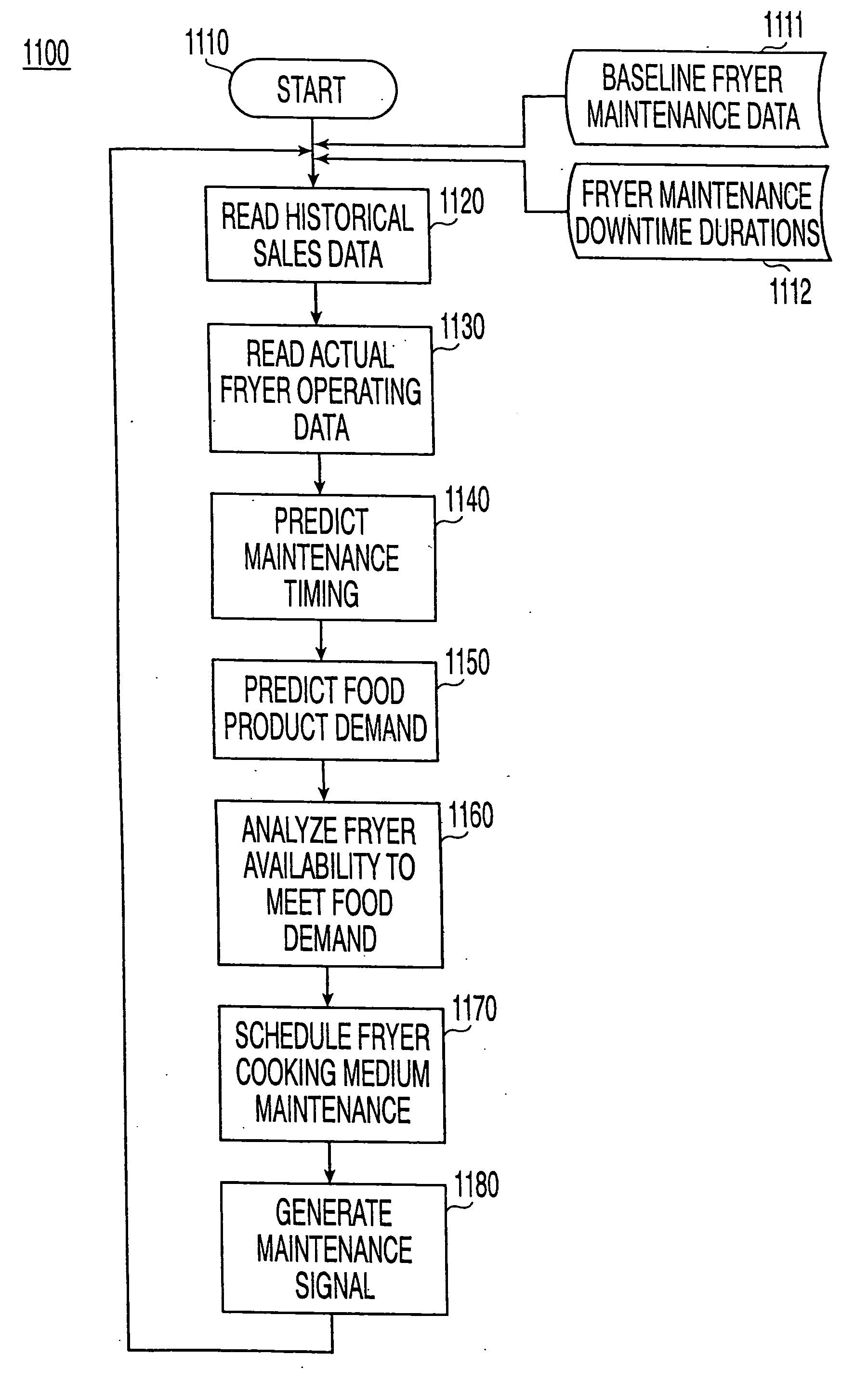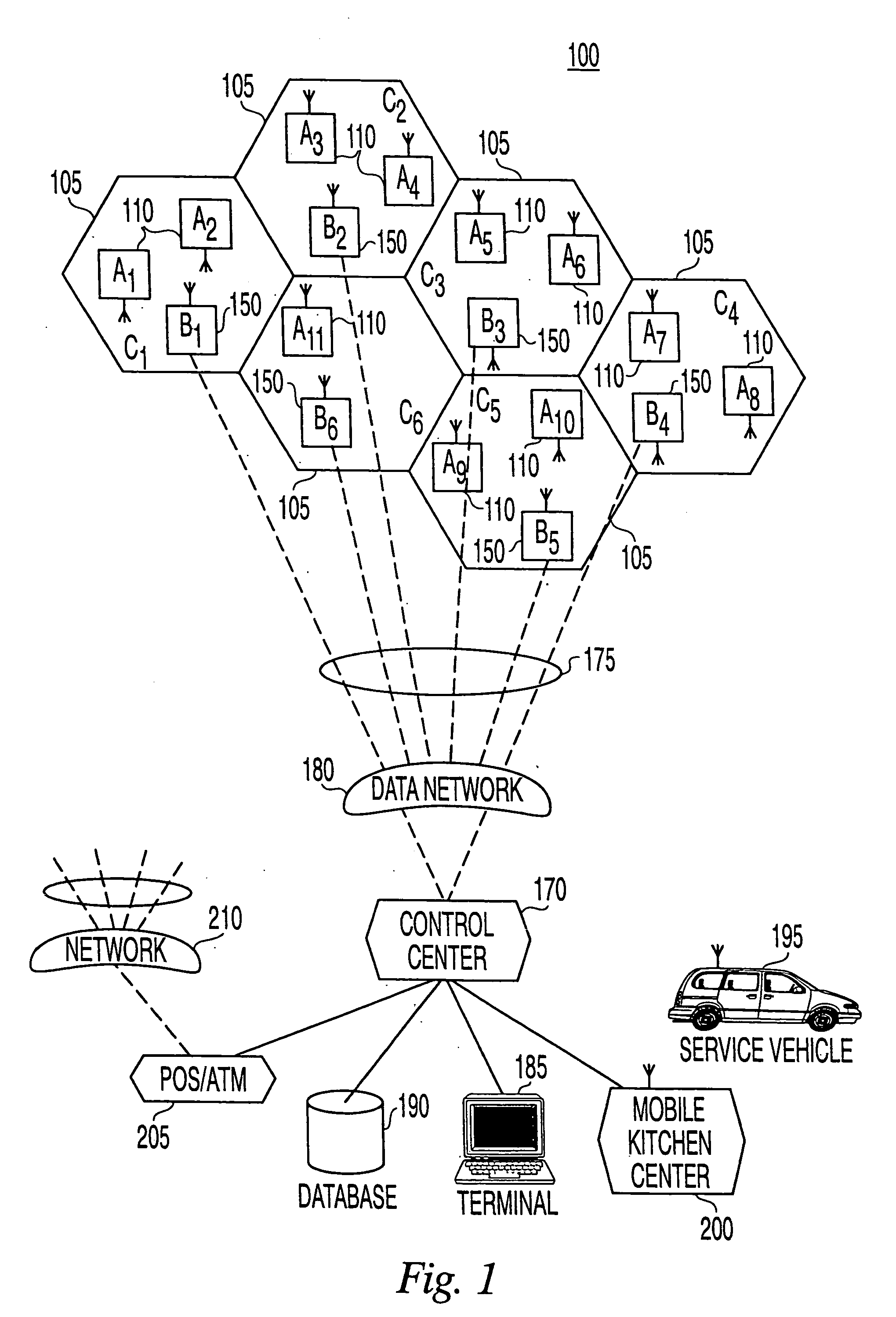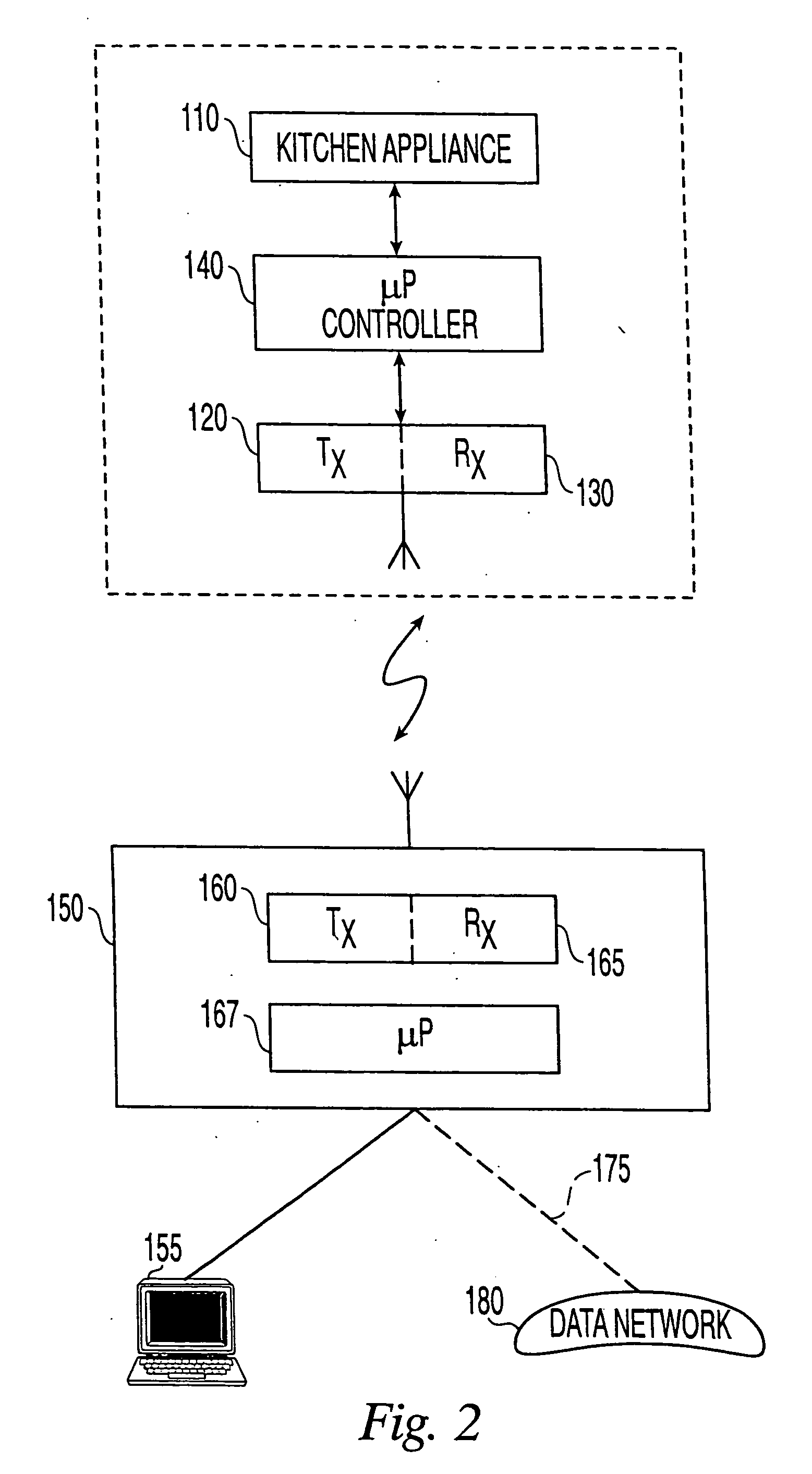Diagnostic data interchange
a technology of diagnostic data and data exchange, applied in the field of communication networks, can solve the problems of inability to keep up with the technology of today's complex kitchen or cooking appliance technology, is too poorly equipped and untrained to do, and is too expensive, so as to achieve the effect of minimizing and reducing the amount of work
- Summary
- Abstract
- Description
- Claims
- Application Information
AI Technical Summary
Benefits of technology
Problems solved by technology
Method used
Image
Examples
Embodiment Construction
[0090] The inventive Smart Commercial Kitchen (SCK) network has the ability, among other things, in real-time to monitor and control the maintenance, repair and energy management of kitchen or restaurant appliances located over a wide geographical area. Maintenance and repair, once initialized, are monitored through a control center which contains the necessary software diagnostics, accounting records, inventory records, and maintenance records for the particular appliance under service. The capability to integrate these various accounting and repair services affords a highly efficient means for providing timely service to system subscribers. The SCK network may be customized to the particular needs of the subscribers, and due to the preferred use of wireless communication, such as cellular radio communication, may be installed and used virtually anywhere in the world.
[0091] It is contemplated that the present SCK network may be realized, in part, by wireless communication. It is t...
PUM
 Login to View More
Login to View More Abstract
Description
Claims
Application Information
 Login to View More
Login to View More - R&D
- Intellectual Property
- Life Sciences
- Materials
- Tech Scout
- Unparalleled Data Quality
- Higher Quality Content
- 60% Fewer Hallucinations
Browse by: Latest US Patents, China's latest patents, Technical Efficacy Thesaurus, Application Domain, Technology Topic, Popular Technical Reports.
© 2025 PatSnap. All rights reserved.Legal|Privacy policy|Modern Slavery Act Transparency Statement|Sitemap|About US| Contact US: help@patsnap.com



